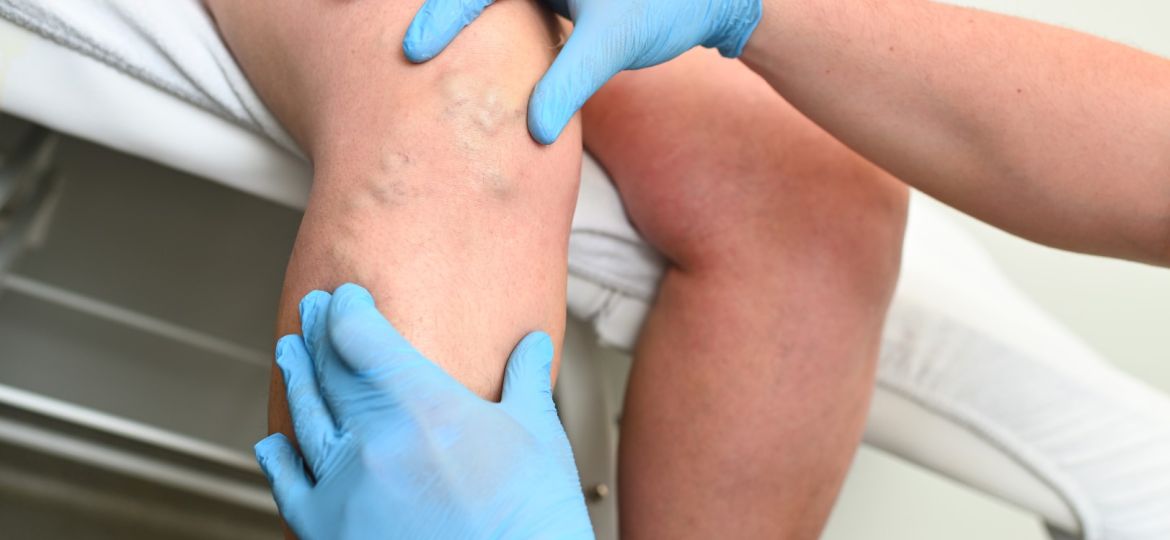
Understanding the Full Spectrum of Vascular Health
When most people think of vein problems, varicose veins or spider veins come to mind first. However, vascular health encompasses much more than superficial vein issues. At Sonoran Vein & Endovascular, our expertise spans both venous and arterial systems. While we often help patients with varicose veins and chronic venous insufficiency, it’s vital to recognize that arterial disease can pose equally serious, though sometimes subtler, threats to your well-being.
In this article, we’ll explore the differences between venous and arterial disorders, the risks associated with arterial disease, and how early detection and care can protect your vascular health beyond just cosmetic concerns.
Vein Issues vs. Arterial Disease: Key Differences
Veins and arteries play complementary roles in circulation. Veins carry blood back toward the heart, while arteries transport oxygen-rich blood from the heart to tissues. Because of these differing functions, disorders in each system manifest differently.
Common Vein Problems
Varicose veins are caused by malfunctioning valves that let blood pool and bulge within the veins.
Symptoms include heaviness, aching, swelling, leg fatigue, and visible twisted veins.
Treatments like radiofrequency ablation, sclerotherapy, and VNUS Closure allow minimally invasive solutions with quick recovery.
What Happens with Arterial Disease
Arterial disease (such as peripheral artery disease, or PAD) results from narrowed or blocked arteries, often due to plaque buildup (atherosclerosis). Symptoms may include leg pain while walking (claudication), numbness, coldness in extremities, non-healing ulcers, or changes in skin color. Because arteries supply oxygen and nutrients, arterial blockages can lead to serious complications—tissue damage, critical limb ischemia, or even amputation if left unchecked.
Understanding these differences is essential: a vascular specialist who treats veins is often also well equipped to detect and manage arterial issues. That’s the approach we take at Sonoran Vein & Endovascular.
Why Arterial Health Matters Even If You Don’t Feel Symptoms
Many patients with early arterial disease are unaware they have it. That’s partly because symptoms can be subtle or mistakenly attributed to aging or joint pain. Yet the consequences of ignoring arterial issues can be severe.
Silent Progression
Arterial disease often develops gradually. Plaque can accumulate without causing obvious symptoms at first. Over time, blockages worsen, and collateral circulation may mask problems until advanced stages.
Serious Consequences
- Critical limb ischemia: Severe blockages reduce blood flow to the point that skin breakdown or gangrene may develop.
- Cardiovascular risk: Arterial disease in the limbs often signals systemic atherosclerosis, increasing the risk for heart attack or stroke.
- Higher treatment burden: Late-stage arterial disease may require bypass surgery, grafts, or more invasive interventions compared to earlier, minimally invasive options.
Because of these risks, our team emphasizes early detection and proactive vascular care—going “beyond varicose veins” is not just a catchy phrase, but a clinical imperative.
Risk Factors & Preventive Strategies
Many of the risk factors that contribute to venous issues overlap with those for arterial disease. But arterial disease also brings its own set of dangers and modifiable elements.
Common Risk Factors
- Smoking (damages arterial walls)
- Diabetes (accelerates atherosclerosis)
- High cholesterol or dyslipidemia
- High blood pressure (vascular stress)
- Obesity and sedentary behavior
- Family history or genetics
Prevention & Healthy Habits
- Adopt a heart- and artery-friendly diet rich in fruits, vegetables, lean proteins, and whole grains.
- Exercise regularly—150 minutes of moderate activity per week helps improve circulation and manage risk factors.
- Quit smoking or avoid tobacco altogether.
- Maintain optimal blood pressure, glycemic control, and cholesterol levels through medications and lifestyle.
- Stay in touch with your vascular specialist for monitoring and screening.
Notice that many of these strategies also benefit vein health. That overlap allows a unified approach to vascular wellness.
Diagnostic Tools & Treatment Options at Sonoran Vein & Endovascular
Because we treat both veins and arteries, our clinic is well equipped to diagnose and manage arterial disease alongside venous conditions.
Diagnostic Techniques
- Ankle-Brachial Index (ABI) and Toe-Brachial Index (TBI): Noninvasive tests comparing blood pressure in the ankle or foot versus the arm.
- Duplex Ultrasound: Visualizes vessel anatomy and blood flow.
- Angiography / CT Angiography (CTA): Imaging with contrast to precisely locate arterial blockages.
Treatment Approaches
- Lifestyle + Medications: Cholesterol-lowering drugs, anti-platelet agents, blood pressure control, and metabolic therapies.
- Minimally Invasive Procedures
- Angioplasty (balloon dilation)
- Stenting (placing a scaffold inside the artery)
- Atherectomy (removing plaque)
- These are safer and faster options when disease is detected early.
- Surgical Intervention
- In more advanced or anatomically complex cases, endarterectomy (plaque removal) or bypass grafting may be required.
At Sonoran Vein & Endovascular, we tailor treatment plans to each patient’s health status, anatomy, and preferences. Early-stage disease often permits less invasive options, improving outcomes and reducing recovery times.
When to Seek Help: Warning Signs of Arterial Concerns
Because arterial disease may start subtly, being alert to certain “red flags” can help you avoid more serious issues down the road:
- Persistent leg pain, cramps, or heaviness while walking (that improve with rest)
- Numbness, tingling, or changes in temperature in your feet or toes
- Non-healing wounds or ulcers on the feet or lower legs
- Skin discoloration, thinning skin, or hair loss on legs
- Weak or absent pulses in the foot
- Sudden pain or color changes in a limb
If you experience any of these, especially in combination with risk factors like diabetes or smoking, it’s time for a vascular evaluation. At our Arizona and New Mexico locations, we routinely evaluate patients for both venous and arterial disease.
Protecting Your Whole Vascular System
Focusing only on varicose veins or visible symptoms leaves a critical piece of your vascular health unaddressed. Instead, consider your circulation holistically. Regular checkups, vascular screenings, and proactive lifestyle choices are key to managing both vein and artery health.
The advantage of working with a specialist like Sonoran Vein & Endovascular is precisely this integrated approach. We can detect conditions early, tailor treatments, and support you through long-term vascular wellness.
Take Action for Better Vascular Health Today
Your veins may be the most visible sign of vascular stress, but your arteries deserve just as much attention. Early detection and intervention can prevent serious complications and improve your quality of life.
If you have had symptoms like leg pain when walking, foot wounds that won’t heal, or risk factors such as diabetes or smoking—even if varicose veins are your main concern—now is the time to act. Let our vascular experts at Sonoran Vein & Endovascular assess both your venous and arterial health, design a personalized plan, and guide you toward long-term vascular well-being.
Contact us today at Sonoran Vein & Endovascular to schedule a comprehensive vascular evaluation. Your circulation matters—and we’re here to help you protect it.
















